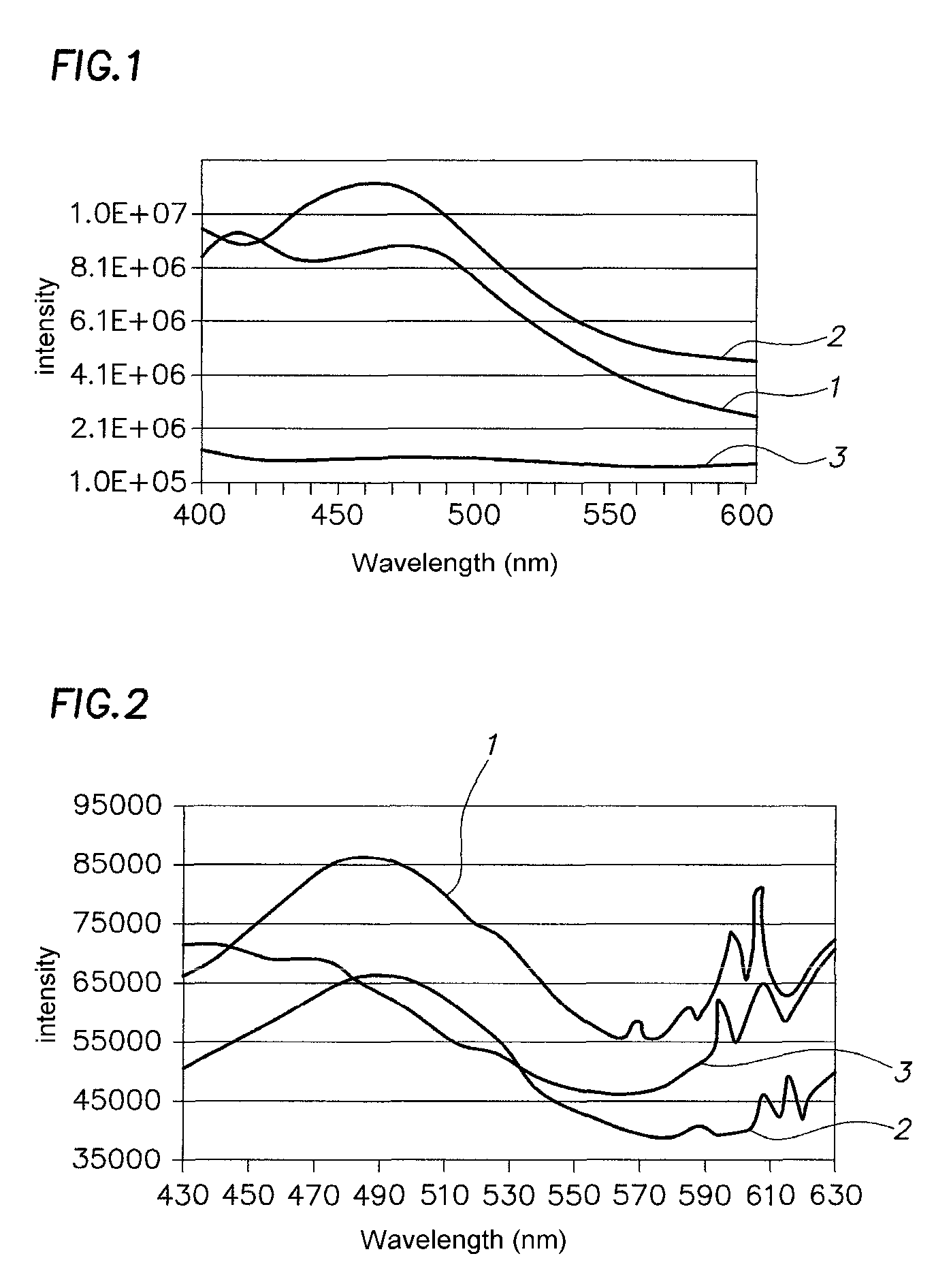Method for automatically identifying a material or an object
a technology of automatic identification and material identification, applied in the field of automatic identification of objects or materials, can solve the problem that the method is intrinsically limited in the capacity of coding information relating to the material
- Summary
- Abstract
- Description
- Claims
- Application Information
AI Technical Summary
Benefits of technology
Problems solved by technology
Method used
Image
Examples
Embodiment Construction
[0082]FIG. 1 illustrates the fluorescence intensity curves of three non-marked plastic compounds, acrylonitrile-butadiene-styrene (ABS, curve 1), polypropylene (PP, curve 2) and black-pigmented polypropylene (curve 3), ABS and PP being two materials currently used. The illumination is produced by means of a UV-TOP light-emitting diode (LED) operating at about 330 nm, i.e. in the near UV, with a rated output power of 1 mW and the spectra are obtained with a fluorescent spectrometer FluoroMax®.
[0083]It is seen:[0084]that the natural fluorescent intensity of ABS and of PP decreases in the region of the red and near infrared (λ>500 nm),[0085]that the fluorescence intensity of black-pigmented PP is constant in the whole visible and near IR domain, but with a lower intensity by more than two orders of magnitude than that of non-pigmented samples.
[0086]Taking into account the lower intrinsic response of these materials in the red and near IR domain on the one hand and the uniformly low res...
PUM
| Property | Measurement | Unit |
|---|---|---|
| wavelengths | aaaaa | aaaaa |
| emission peak | aaaaa | aaaaa |
| emission peak | aaaaa | aaaaa |
Abstract
Description
Claims
Application Information
 Login to View More
Login to View More - R&D
- Intellectual Property
- Life Sciences
- Materials
- Tech Scout
- Unparalleled Data Quality
- Higher Quality Content
- 60% Fewer Hallucinations
Browse by: Latest US Patents, China's latest patents, Technical Efficacy Thesaurus, Application Domain, Technology Topic, Popular Technical Reports.
© 2025 PatSnap. All rights reserved.Legal|Privacy policy|Modern Slavery Act Transparency Statement|Sitemap|About US| Contact US: help@patsnap.com


